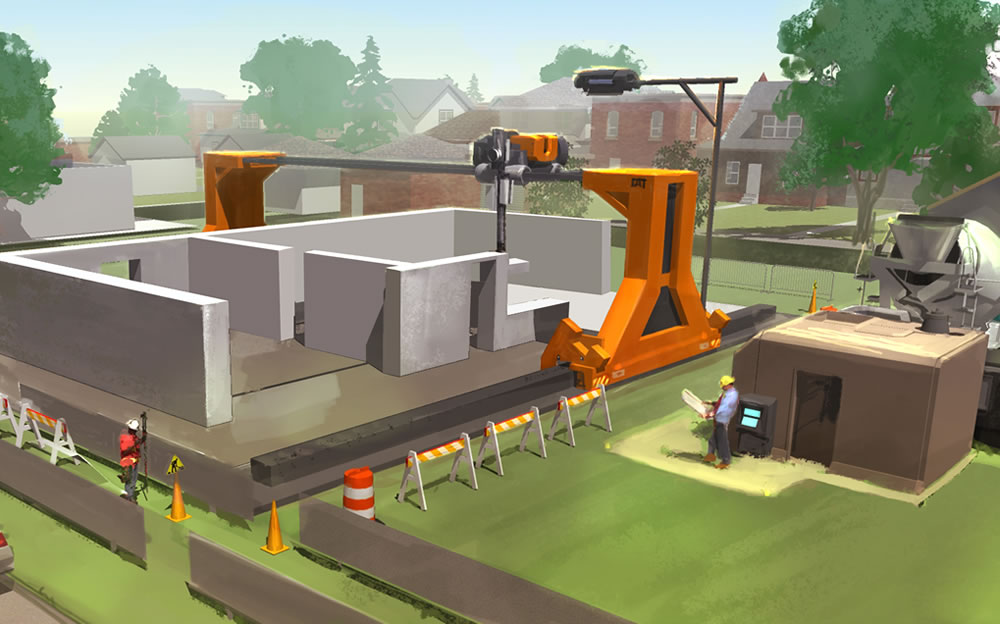3D printers are changing the way of producing all kinds of small objects, even in the world of food and medicine. But they are set to be a real revolution in the construction sector in a few years thanks to the improved size of their pieces.
Now there are printers 3D in construction that are starting to use this new production technique to create complete houses and buildings without having to use hundreds of materials, machinery, and workers. Firms from the whole construction world aim for fast, à la carte construction of houses and buildings, using the 3D printers but reproducing them in a bigger size.
3D Houses (Contour Crafting)
The Chinese company WinSun has been one of the pioneers in using the 3D printers to build houses. It started off by making individual pieces, and then later by investing in its own R+D it got hold of a large format 3D printer (this printer is almost 7 metres high, 10 metres wide and 40 metres long) and it has already used it to build a complex of up to 1000 square metres based on the modular production.
Contour Crafting is the evolution of the WinSun model, which combines the 3D printing in construction with robotic components. In this case the same 3D printer is used directly in the construction site and 2 storey houses have already been built in less than 24 hours. The 3D printer forms the house’s walls layer by layer climbing upwards until the construction work has been completed.
Savings
This Chinese company insists that its new technique can save as much as 60% of the materials that are normally used in construction, 70% of the time spent on the construction and 80% of the labour costs. At the moment 10 houses can be built in just 24 hours, using various printers at the same time.
The same method used by WinSun is being copied all around the world; one of example is the United States. The Contour Crafting project of the University of Southern California is working on a huge 3D printer that can build 2 storey houses in 24 hours.
The system designed by professor Behrokh Khoshnevis, adds the feature of the printer attaching itself to the walls that it builds, to construct the buildings vertically. Furthermore, this system makes it easier to construct mass-produced buildings that withstand earthquakes.
However, all this innovation is not the end of the world for construction as we know it, or at least not entirely, because although this new technology builds a solid and efficient structure quickly, manpower is still needed for the electrical wiring, piping, windows, doors, etc.



